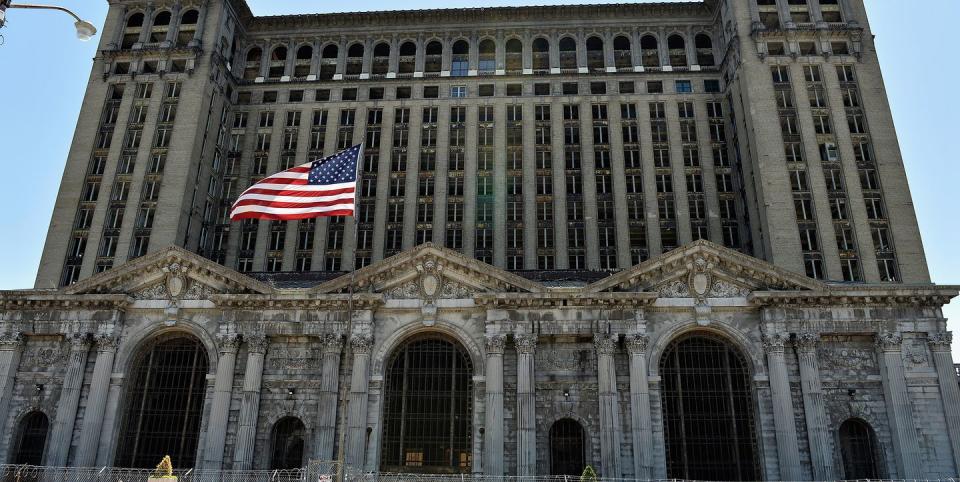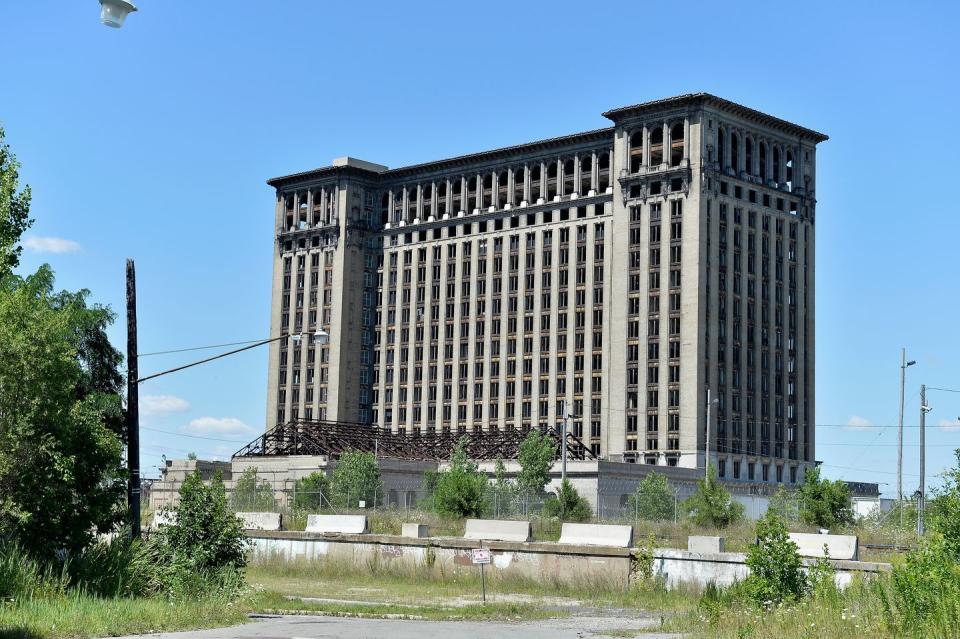It’s Official: Ford Buys Detroit’s Storied Michigan Central Station

Detroit has no shortage of vacant properties, but when it comes to picking the ones that truly define the fall of Detroit, the 18-story Michigan Central Station is near the top of the list. Along with the former Packard plant, the Michigan Central Station has served for three decades as one of the most prominent physical manifestations of the city’s decline. Now, as people and businesses continue to relocate to Detroit’s core, Ford has taken the giant step of purchasing the long-vacant train station for redevelopment.
First reported in late May, the deed transfer between the privately held Crown Enterprises, owned by the Moroun family, and Ford was made official this morning, although the purchase price has not been revealed. Ford’s latest play in Detroit’s Corktown neighborhood, the acquisition comes on the heels of the company’s earlier purchase of a former factory located at 1907 Michigan Avenue, which stands in the shadow of the Michigan Central Station. The Michigan Avenue facility currently provides offices for approximately 200 Ford tech and EV-project employees. Although Ford hasn’t yet publicized its plans for the Central Station, it says a full download of information will be presented on Tuesday, June 19.
Dedicated in January 1914, the Michigan Central Station survived the rise of the automobile though World War II, despite the facility’s distinct lack of a large parking facility. Eventually, declining passenger travel and skyrocketing maintenance costs in the 1960s forced the owners to mothball essentially the entire building except for a few ticket windows. Amtrak took control in the early 1970s and reopened some of the lobby area, but Amtrak then moved its operations to a smaller facility nearby, and in 1988 the last passenger train left the station. Detroit’s Moroun family purchased it in 1992, after which several proposed renovation projects were circulated, including transforming it into a convention center and/or casino or a headquarters for the Michigan State Police. In 2004, Detroit’s then mayor, Kwame Kilpatrick, announced the city was considering moving its police department into the facility. Another idea was to convert it to a customs and international trade center to take advantage of its location near the high-traffic-volume Ambassador Bridge connecting Detroit with Canada-which just happens also to be owned by the Morouns.

As the owners of that bridge, the largest and only privately held border crossing between the United States and Canada, the Moroun family has for decades somewhat ambiguously used the Michigan Central Station as a bargaining chip with the city of Detroit, as well as its conflict with the U.S. and Canadian governments’ plan to construct a new, publicly held bridge to streamline international crossing. While the Michigan Central Station sits just under a mile from the Detroit River, it sits nestled snugly into the pocket where I-175, I-96, U.S. 12, and various commercial-traffic city streets converge to lead up the ramp to the Ambassador and the U.S. Customs and Border protection agencies-what’s that old real-estate adage about location?
While the Morouns never specifically designated the property for bridge development, it remained a very visible reminder of their resources and power. What the Morouns couldn’t have predicted back when they purchased the Michigan Central Station is how quickly the rise of what’s often called ruin-porn tourism would make the building internationally known. To willingly destroy it now that Corktown-the oldest original remaining neighborhood in Detroit-is on the rebound would have irreparable repercussions on the family name for decades. The Morouns have stated the sale of the Station frees them up to focus on their bridge project.
You Could Be the Man Who Owns It: Detroit Packard Plant Complex Slated for Auction
Detroit Luthier Utilizes Wood Reclaimed from Chevrolet Truck Plant
Ten Epic-and Epically Named-Engines from When Detroit Ruled the World
Now that the Michigan Central Station’s fate is determined, the Morouns are promoting their efforts as preservationists. To be fair, the Station did undergo several conservancy efforts while under their care, most notably an asbestos abatement and the installation of “over 1000” windows in 2015. But it’s in Ford’s hands now, and the city is hoping the automaker will do right by the building.
You Might Also Like

 Yahoo Autos
Yahoo Autos 